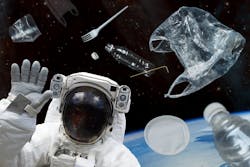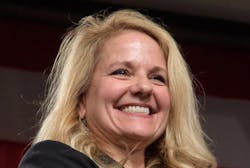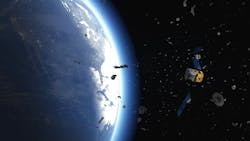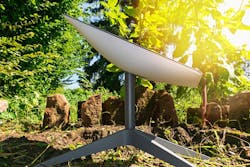LEO Satellites: Here's What's Been Said in Recent Weeks
Here's round two of our quote roundup in the world of LEO satellites as they become a bigger part of the telecom conversation, and as legislation, BEAD projects, industry sentiment, and other factors evolve.
Here are four quotes that sum up some of the recent highlights orbiting around in the satellite "space."
1. “I never hear Chinese companies complaining about Chinese regulatory regime, right? I think it's quite the opposite, right? I think the government is incredibly helpful to push those technologies forward fast, so I think that's a lesson that we need to learn as well…”
- Gwynne Shotwell, SpaceX COO
DefenseOne reported on SpaceX COO Shotwell’s words at an event, where she praised China’s lack of regulations in their space program.
Shotwell said, however, that she believes regulation is important. But that technology should be the priority, and should not be held back.
“I do think we need to rethink very quickly the regulatory regime for space launch and space comms and other space capability to make sure that regulation, which is important…needs to keep up with technology,” she said.
The FCC, for their part, is set to release recommendations in late summer after a review.
2.
“The Kessler syndrome … describes a scenario in which the volume of debris in Earth’s orbit reaches a critical threshold, triggering a cascade effect where collisions generate even more debris, which causes even more collisions.”
- Patrick Schroeder
In Patrick Schroeder’s op-ed in The Guardian, he echoes recent concerns about the rapid increase in space activity and the potential harm that could be caused, especially if proceeds unchecked.
International rules, codes, guidelines, etc. that were established in the golden age of space face their limits when you factor in large-scale commercial space projects that go beyond sending astronauts to the moon or launching weather satellites, of course. The Outer Space Treaty of 1967, for example, is missing “specific guidelines for commercial activities, space mining, and crucially, mandates for debris mitigation and removal,” writes Schroeder.
Schroeder is encouraged by attempts to mitigate space junk, however, such as the ideas of the “circular space economy.” He writes, “Circular solutions include reuse, repair, recycling, eco-design, sustainable supply and responsible consumption.” He also mentions legal frameworks that can be adopted.
I’m skeptical that solutions requiring a lot of regulation, legislation, or any initiative that with the word “green” in it will outweigh the financial, political, and cultural forces providing the momentum fueling the current billionaire space race.
3. “I’m open to the idea but still need to see a compelling business case. While the technology to light up cell phones from satellites is fascinating, the economics need to work. Reaching critical mass with a customer base largely within existing cellular coverage remains a challenge.”
- Ronald van der Breggen, CCO, Rivada Space Networks
In a roundtable Q&A published on Via Satellite, industry leaders were asked “Do you believe the direct-to-cell market will be the next big market in satellite? Why or why not?” and van der Breggen from Rivada Space Networks expressed skepticism that this technology would be it, given the current limitations for building a large customer base.
Others were more optimistic about the possibilities. Aida Alyaaqoubi from Space42 said “…easy accessibility for the targeted customers without the additional costs and extra fees imposed by big telephone companies makes it appealing enough to sell.”
Commercial potential aside, the emergency response and safety angle has been enough to kickstart various direct-to-device enterprises. T-Mobile recently initiated an early test launch of a test its Starlink partnership service to allow emergency alerts and texts during the ongoing L.A. fires.
4. “NTIA has also taken steps to significantly reduce barriers to participation by LEO satellite providers.”
– NTIA final guidance announcement
The NTIA recently released Final Guidance on alternative technologies for BEAD projects with the hope of helping states better understand the guidelines. The agency says this final guidance offers additional flexibility and simplified processes.
It elaborates on the draft guidance issued last August, on which the agency says received 138 comments.
“The Policy Notice gives states the flexibility to reimburse LEO providers based upon either subscriber milestones or the number of locations in a project area,” stated the agency.
“Letter of Credit obligations, Federal interest requirements, and consumer premises equipment obligations have all been addressed in a manner that will better facilitate participation by LEO providers while preserving taxpayer and consumer protections across the BEAD program.”
For the previous edition of "What's Been Said" in LEO satellites, click here.
For the latest "What's Been Said" in fiber broadband, click here.
About the Author
Joe Gillard
Executive Editor
Joe Gillard is a media professional with over 10 years of experience writing, editing, and managing the editorial process across a spectrum of innovative industries. Joe strives to deliver the best possible editorial product by focusing on the needs of the audience, utilizing the data available, and collaborating with a talented team.





